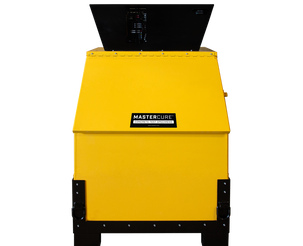Standard Cured Cylinders
Strength data from standard cured specimens, as opposed to field-cured test specimens, are used for the following purposes:
Note that purpose of standard cured cylinders is NOT to estimate in-place concrete strength, but rather to determine the potential strength and/or consistency of the representative concrete.
The key to making standard cured test specimens is that they are produced and cured in a defined, repeatable way. Standard cured test specimens are typically molded in the field, initially stored onsite in a controlled environment, then relocated to a lab where they continue to cure up to a specified age at which the strength is determined by destructive testing.
It is very important that each step of the process is carefully controlled. For example, during the initial cure:
- Potential Strength- Is the mix design able to achieve the specified strength
- Acceptance - Is a particular batch of concrete able to reach the designated potential strength
- Quality Control - Is the concrete consistent, batch to batch
- Maturity Validation - verifying that the in-place concrete has a comparable potential strength as the calibration batch when using concrete maturity methods to estimate in-place concrete strength (reference ASTM C1074).
Note that purpose of standard cured cylinders is NOT to estimate in-place concrete strength, but rather to determine the potential strength and/or consistency of the representative concrete.
The key to making standard cured test specimens is that they are produced and cured in a defined, repeatable way. Standard cured test specimens are typically molded in the field, initially stored onsite in a controlled environment, then relocated to a lab where they continue to cure up to a specified age at which the strength is determined by destructive testing.
It is very important that each step of the process is carefully controlled. For example, during the initial cure:
- Test specimens must be transported to the initial curing location within 15 minutes of being molded
- Test specimens may be stored in the initial curing environment for a period up to 48 hours after molding
- The specimens must be protected from moisture loss and direct exposure to sunlight during initial cure
- The initial curing environment must be maintained between 16 and 27C (60 and 80F), or 20 and 26C (68 and 78F) for high-strength mix designs

The most convenient initial curing environment is a computerized concrete test specimen curing box that heats and cools to maintain a specified environmental temperature.
One curing box example is the MasterCure, by RPX Technologies.
Click here for more information
One curing box example is the MasterCure, by RPX Technologies.
- Heats and Cools
- Computer Controlled
- Holds 22 6"x12" cylinders (approximately doubles when stacked)
Click here for more information
After initial cure, the test specimens can be transported to a final curing location where the molds are stripped. Once the molds are stripped, the test specimen must be continuously exposed to free water to ensure enough water is always available for continued hydration of cementitious materials. And the curing environment must be maintained at 23C +/-2C (73.5F +/- 3.5F).

